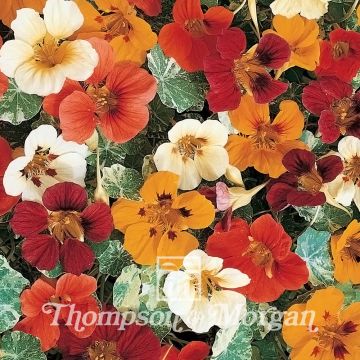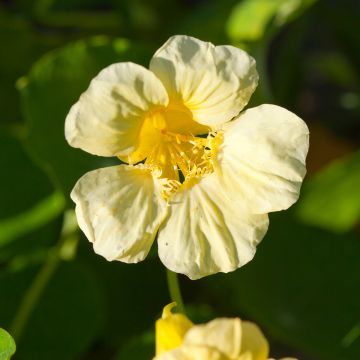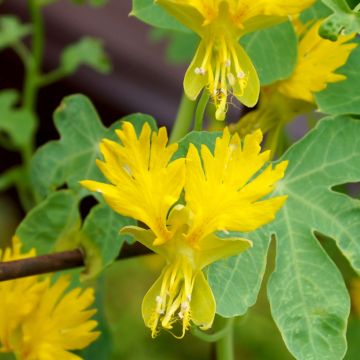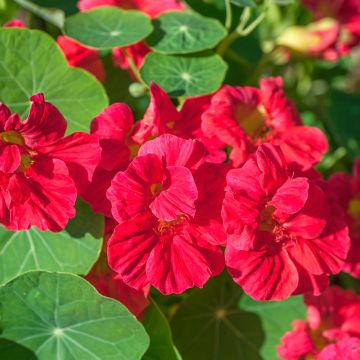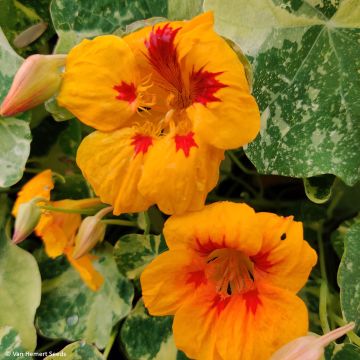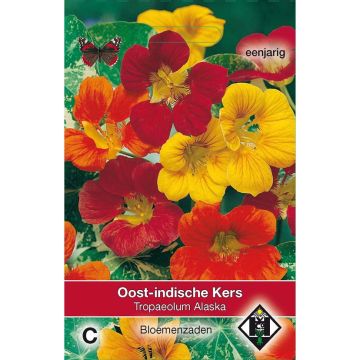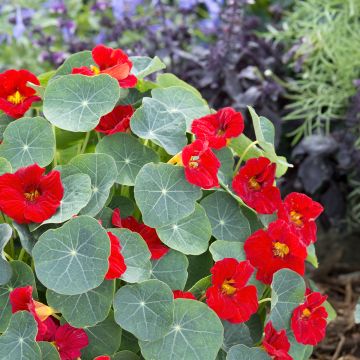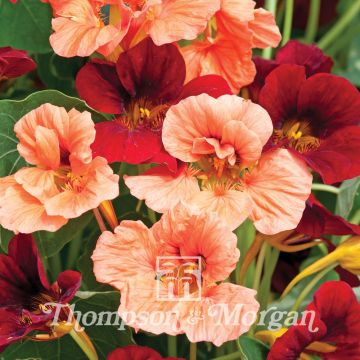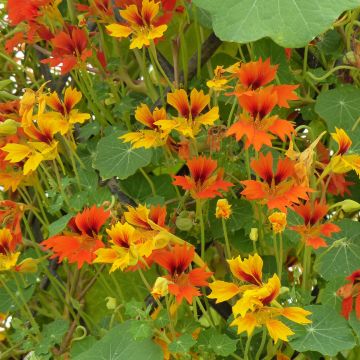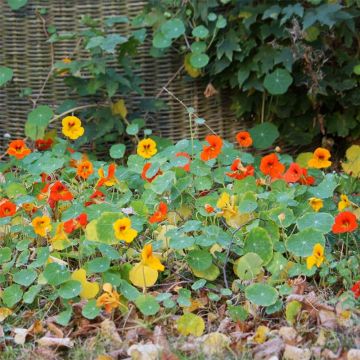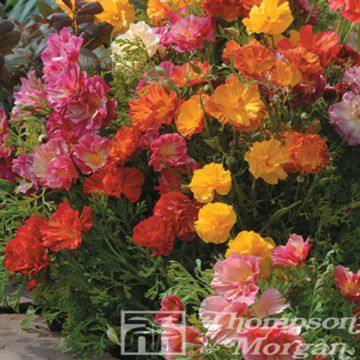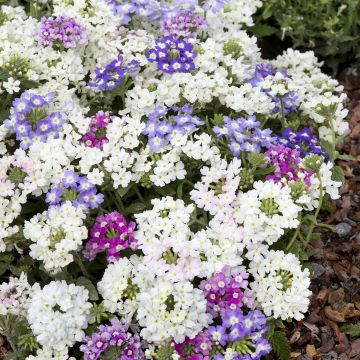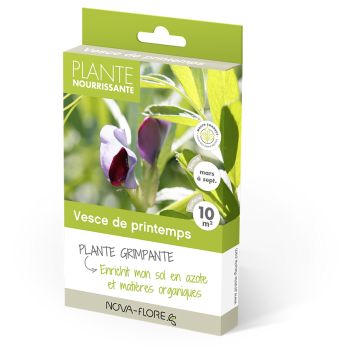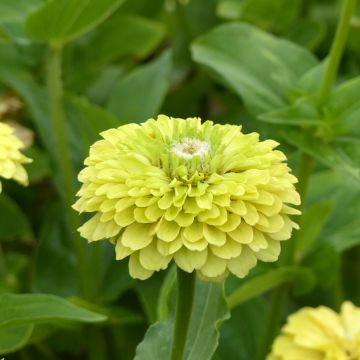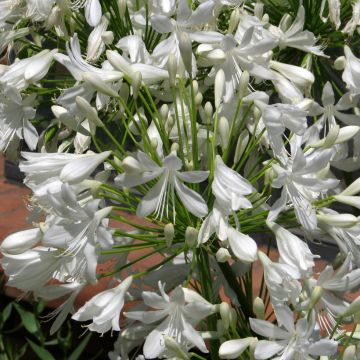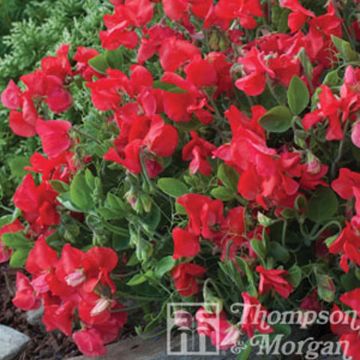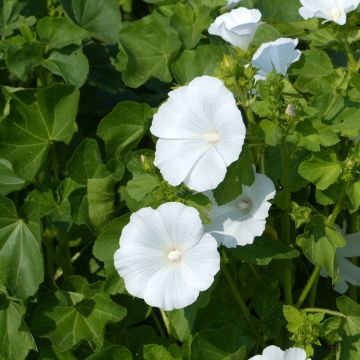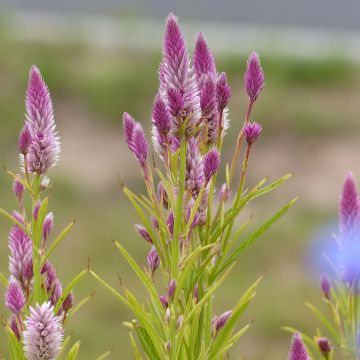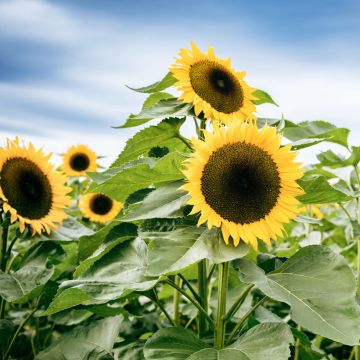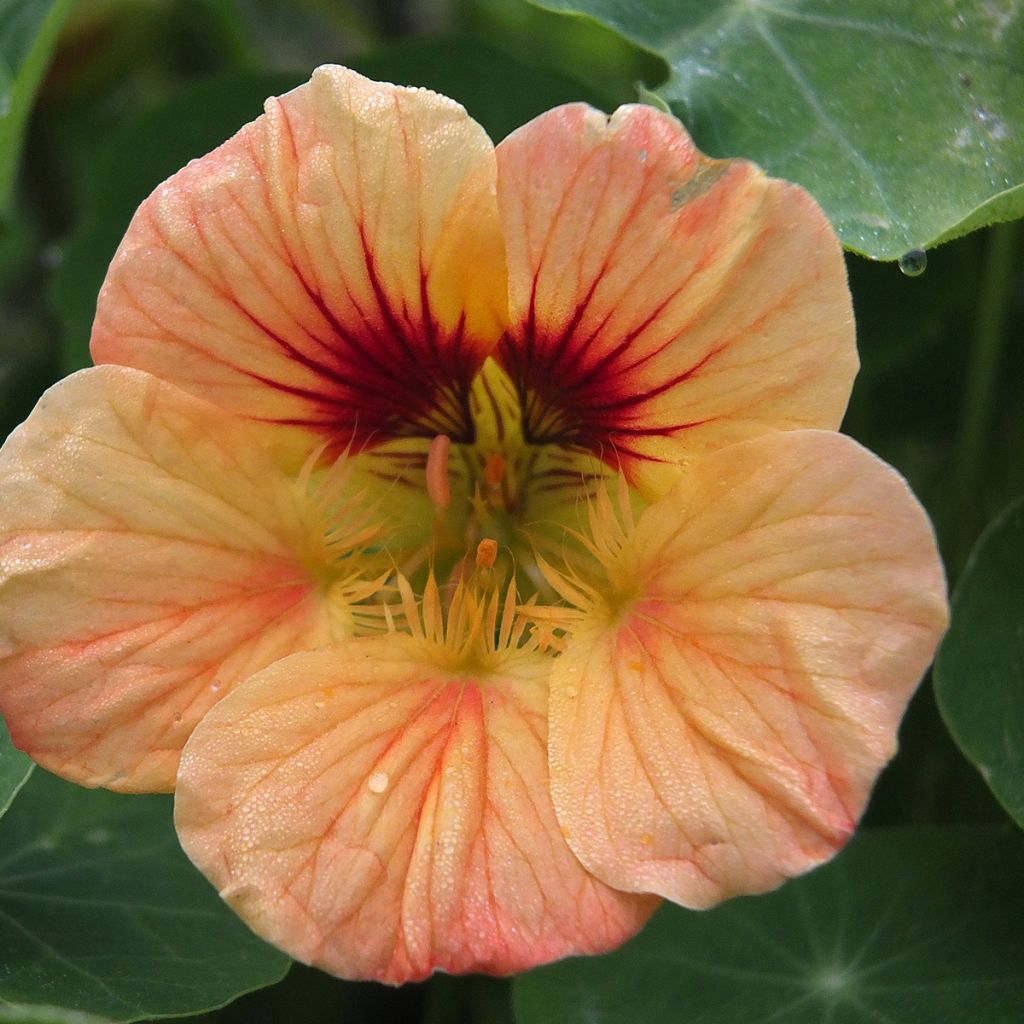

Tropaeolum majus nanum Salmon Baby
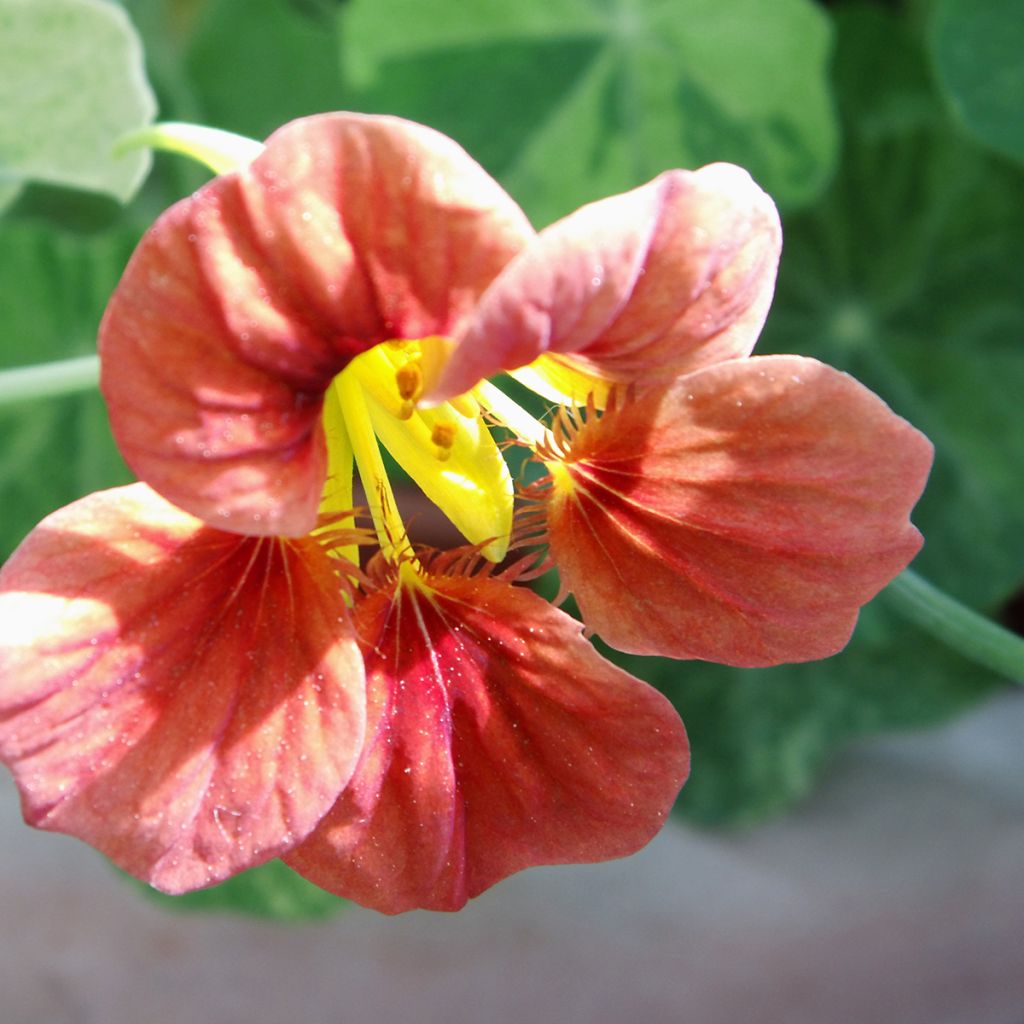

Tropaeolum majus nanum Salmon Baby
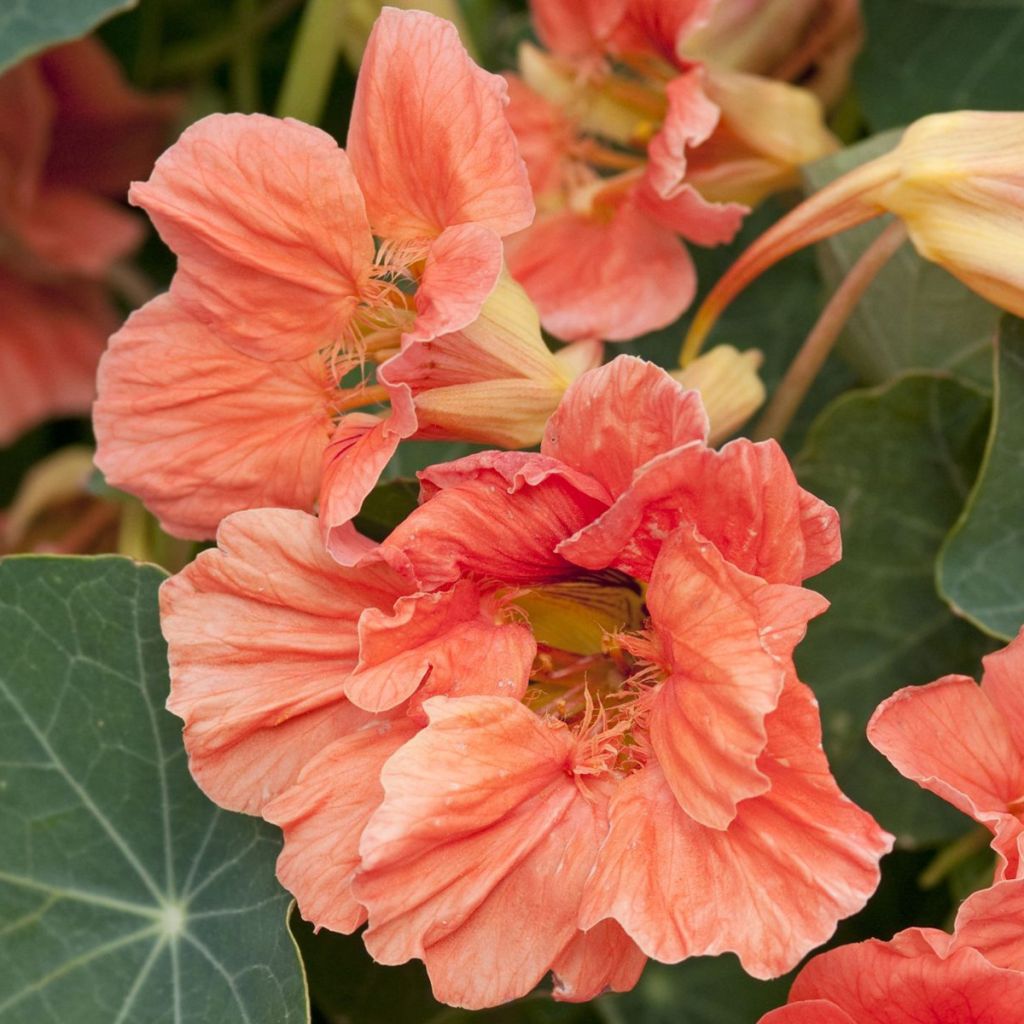

Tropaeolum majus nanum Salmon Baby
Tropaeolum majus nanum Salmon Baby
Tropaeolum majus nanum Salmon Baby
Garden Nasturtium, Dwarf Nasturtium
This item cannot be shipped to the selected country
Dispatch by letter from €3.90
More information
Schedule delivery date,
and select date in basket
This plant carries a 6 months recovery warranty
More information
We guarantee the quality of our plants for a full growing cycle, and will replace at our expense any plant that fails to recover under normal climatic and planting conditions.
Seed-only orders are dispatched by sealed envelope. The delivery charge for seed-only orders is €3.90.
Does this plant fit my garden?
Set up your Plantfit profile →
Description
The 'Salmon Baby' Dwarf Nasturtium is an annual plant of small stature, bushy in habit, and is distinguished by the beauty of its salmon-pink to orange-coloured flowers. Its beautiful funnel-shaped, frilly flowers, single to semi-double, bloom for weeks. They are perfectly complemented by the dark green foliage. With its short stems, this selection is ideal for growing in pots, window boxes, and hanging baskets. Its flowers add colour to summer salads, while its leaves provide a hint of spiciness. It is also a very useful plant in the vegetable garden, to be grown in full sun, in ordinary, moist, but well-drained soil.
The Tropaeolum majus is an annual climbing or creeping plant native to South America, belonging to the family Tropaeolaceae. It has given rise to numerous varieties and forms, some of which remain dwarf and compact. This is the case with 'Salmon Baby', which forms in one season a small, bushy clump measuring 30 cm (12in) in height and 35 cm (14in) in width. It blooms from June to September-October, producing numerous flowers of a good size with unequal and frilly petals, equipped with a spur, in salmon tones. In our climates, it is mainly pollinated by bumblebees. The flowering is followed by the formation of fruits containing seeds slightly smaller than peas, which are easy to sow. Plants grown from seeds may not necessarily be identical to the parent plant. The foliage of this variety 'Salmon Baby', elegant in appearance, is composed of round, peltate leaves with clear radiating veins, of a beautiful dark greenish-grey colour. It is a frost-tender plant that can be grown in open ground in coastal gardens where frosts are rare, protected from sea spray.
Plant Salmon Baby nasturtium in borders, rockeries, flower pots, or hanging baskets. Install it in the vegetable garden and orchard, where it will help eliminate pests harmful to your other crops while bringing freshness and cheerfulness to its humble companions. Nasturtium makes its way into the kitchen, its leaves and flowers can be added raw to salads, sauces, and mayonnaise. They have a spicy and aromatic flavour reminiscent of watercress. The flower buds and young fruits are sometimes preserved in vinegar, providing a substitute for capers. The superb salmon colour of 'Salmon Baby' pairs perfectly with white or blue blooms: to accompany it, consider annual lobelias, 'Snow Crystals' Alyssum, or 'Angelface Carrara White' Angelonia, for example.
Report an error about the product description
Tropaeolum majus nanum Salmon Baby in pictures
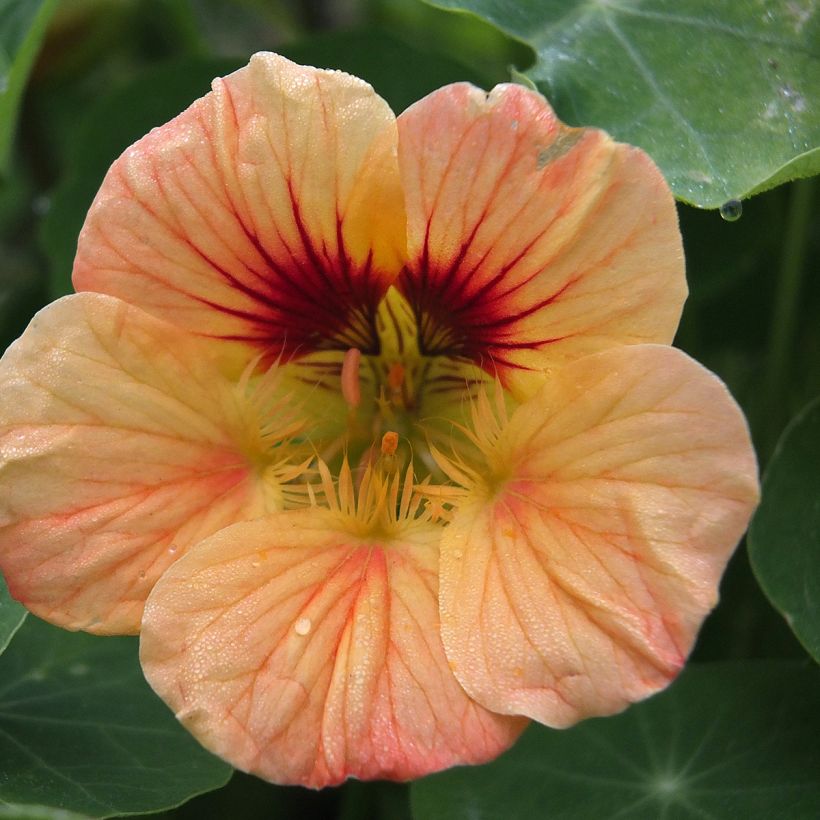

Flowering
Foliage
Plant habit
Botanical data
Tropaeolum
majus nanum
Salmon Baby
Tropaeolaceae
Garden Nasturtium, Dwarf Nasturtium
Cultivar or hybrid
Other Nasturtium seeds
Planting and care
Two possible sowing periods:
Sow in pots under shelter in April, in groups of 3 to 5 seeds. Place your pots in a bright room at a minimum of 18°C (64.4°F). It takes about 18 days for the seedlings to appear. Transplant your seedlings to the garden in May, after the last frost. Space your plantings at least 50 cm (20in) apart.
Sow your 'Salmon Baby' Nasturtiums directly in the garden from May (once the frosts have passed) to June, in groups of 3 to 5 seeds. Water generously during cultivation. Removing faded flowers will promote flowering renewal. Nasturtiums are a real treat for aphids and caterpillars (especially those of the Cabbage White butterfly). The advantage is that they prevent an invasion on your cabbages. So do not place them near your cabbages in your vegetable garden.
Sowing period
Intended location
This item has not been reviewed yet - be the first to leave a review about it.
Flower seeds
Haven't found what you were looking for?
Hardiness is the lowest winter temperature a plant can endure without suffering serious damage or even dying. However, hardiness is affected by location (a sheltered area, such as a patio), protection (winter cover) and soil type (hardiness is improved by well-drained soil).

Photo Sharing Terms & Conditions
In order to encourage gardeners to interact and share their experiences, Promesse de fleurs offers various media enabling content to be uploaded onto its Site - in particular via the ‘Photo sharing’ module.
The User agrees to refrain from:
- Posting any content that is illegal, prejudicial, insulting, racist, inciteful to hatred, revisionist, contrary to public decency, that infringes on privacy or on the privacy rights of third parties, in particular the publicity rights of persons and goods, intellectual property rights, or the right to privacy.
- Submitting content on behalf of a third party;
- Impersonate the identity of a third party and/or publish any personal information about a third party;
In general, the User undertakes to refrain from any unethical behaviour.
All Content (in particular text, comments, files, images, photos, videos, creative works, etc.), which may be subject to property or intellectual property rights, image or other private rights, shall remain the property of the User, subject to the limited rights granted by the terms of the licence granted by Promesse de fleurs as stated below. Users are at liberty to publish or not to publish such Content on the Site, notably via the ‘Photo Sharing’ facility, and accept that this Content shall be made public and freely accessible, notably on the Internet.
Users further acknowledge, undertake to have ,and guarantee that they hold all necessary rights and permissions to publish such material on the Site, in particular with regard to the legislation in force pertaining to any privacy, property, intellectual property, image, or contractual rights, or rights of any other nature. By publishing such Content on the Site, Users acknowledge accepting full liability as publishers of the Content within the meaning of the law, and grant Promesse de fleurs, free of charge, an inclusive, worldwide licence for the said Content for the entire duration of its publication, including all reproduction, representation, up/downloading, displaying, performing, transmission, and storage rights.
Users also grant permission for their name to be linked to the Content and accept that this link may not always be made available.
By engaging in posting material, Users consent to their Content becoming automatically accessible on the Internet, in particular on other sites and/or blogs and/or web pages of the Promesse de fleurs site, including in particular social pages and the Promesse de fleurs catalogue.
Users may secure the removal of entrusted content free of charge by issuing a simple request via our contact form.
The flowering period indicated on our website applies to countries and regions located in USDA zone 8 (France, the United Kingdom, Ireland, the Netherlands, etc.)
It will vary according to where you live:
- In zones 9 to 10 (Italy, Spain, Greece, etc.), flowering will occur about 2 to 4 weeks earlier.
- In zones 6 to 7 (Germany, Poland, Slovenia, and lower mountainous regions), flowering will be delayed by 2 to 3 weeks.
- In zone 5 (Central Europe, Scandinavia), blooming will be delayed by 3 to 5 weeks.
In temperate climates, pruning of spring-flowering shrubs (forsythia, spireas, etc.) should be done just after flowering.
Pruning of summer-flowering shrubs (Indian Lilac, Perovskia, etc.) can be done in winter or spring.
In cold regions as well as with frost-sensitive plants, avoid pruning too early when severe frosts may still occur.
The planting period indicated on our website applies to countries and regions located in USDA zone 8 (France, United Kingdom, Ireland, Netherlands).
It will vary according to where you live:
- In Mediterranean zones (Marseille, Madrid, Milan, etc.), autumn and winter are the best planting periods.
- In continental zones (Strasbourg, Munich, Vienna, etc.), delay planting by 2 to 3 weeks in spring and bring it forward by 2 to 4 weeks in autumn.
- In mountainous regions (the Alps, Pyrenees, Carpathians, etc.), it is best to plant in late spring (May-June) or late summer (August-September).
The harvesting period indicated on our website applies to countries and regions in USDA zone 8 (France, England, Ireland, the Netherlands).
In colder areas (Scandinavia, Poland, Austria...) fruit and vegetable harvests are likely to be delayed by 3-4 weeks.
In warmer areas (Italy, Spain, Greece, etc.), harvesting will probably take place earlier, depending on weather conditions.
The sowing periods indicated on our website apply to countries and regions within USDA Zone 8 (France, UK, Ireland, Netherlands).
In colder areas (Scandinavia, Poland, Austria...), delay any outdoor sowing by 3-4 weeks, or sow under glass.
In warmer climes (Italy, Spain, Greece, etc.), bring outdoor sowing forward by a few weeks.

































